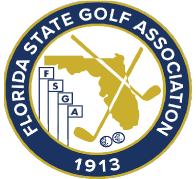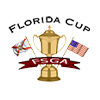I think all of us witnessed the unfortunate incident at the U.S. Open recently. Regardless of your opinion, let me try and explain how the Rules of Golf got to where they are today. I apologize in advance that this article is longer than normal; however the situation dictates a more thorough analysis.
I think everyone can agree that DJ’s ball moved on the fifth green at Oakmont in the final round. This is not the first time, nor will it be the last time, a player is involved with an accidental movement of the ball. The movement of a ball was first defined in the R&A Rules of Golf way back in 1891 as follows:
Rule 26. A ball is considered to have been moved if it leaves its original position in the least degree, and stops in another; but if a player touches his ball and thereby causes it to oscillate, without causing it to leave its original position, it is not moved in the sense of Rule 25
Another important pertinent definition came about in 1899 when the R&A added the following definition: ‘Addressing the ball’ shall mean that a player has taken up his position and grounded his club; or if in a hazard, that he has taken up his position preparatory to striking the ball.
In 1950, the R&A implemented the following Rule that linked the movement of the ball to the act of addressing the ball and the applicable penalty:
Rule 26-1(iv)(b) Ball at Rest Moved by Player - When the ball is ‘in play,’ if it move after the player has grounded his club, or in a hazard after he has taken up his stance, he shall be deemed to have caused it to move and the penalty shall be one stroke, the ball shall be played as it lies.
And then in 1952, both the R&A and the USGA jointly released the agreed upon Rules of Golf that contained the following version of the Rule in question.
Rule 27-d. Ball Moving after Address - If a ball in play move after the player has addressed it (Definition 1), he shall be deemed to have caused it to move and shall incur a penalty stroke, and the ball shall be played as it lies.
In 1984, the Rule was re-numbered to Rule 18-2b.
It is important to note that the act of addressing the ball triggered this Rule. Whether it be on the putting green, in the rough or fairway, as soon as you grounded your club you were guilty if your ball thereafter moved. In a bunker or a water hazard; you were penalized if the ball moved after you had taken your stance, since you are not allowed to ground your club in a hazard generally.
In 2012, the definition of Addressing the Ball was amended to “A player has 'addressed the ball' when he has grounded his club immediately in front of or immediately behind the ball, whether or not he has taken his stance”. Please note that this change of removing the stance from the definition took Rule 18-2b out of the picture for bunkers and water hazards. Remaining was the inherent assumption that the placing of the club behind the ball moved the grass enough to cause the ball to move and thus generating this penalty.
Also, and very important, is that an Exception was added to Rule 18-2b that stated
After numerous instances of players being unfairly penalized, especially at the Masters, an exception was added so that when balls were being moved by the wind after a player addressed his ball, the player was absolved of any penalty. The exception read “If it is known or virtually certain that the player did not cause his ball to move, Rule 18-2b does not apply.” This was an attempt to try and clean up some of the problems associated with Rule 18-2b but still left a lot of gray area in interpreting the Rule. For instance, gravity was still not an accepted excuse and the player was on the hook for a penalty (Decision 18-2b/11 at the time).
In 2016, Rule 18-2b was removed for the Rules of Golf. In order to address the situation where a player caused his ball to move (Rule 18-2) and give guidance, the rules makers introduced Decision 18-2/0.5. I will give you the complete text of the Decision but try and direct you to the pertinent parts that caused the USGA to come to their decision on the matter by underlining that text.
Decision 18-2/0.5 - Weight of Evidence Standard for Determining Whether Player Caused His Ball to Move
When a player's ball at rest moves, the cause of the ball's movement has to be assessed. In many situations, the answer will be obvious: the player may have kicked the ball inadvertently, dropped his equipment on it, or otherwise clearly caused it to move; alternatively, the player may have taken no action near the ball and something else (such as a spectator or animal) clearly caused it to move.
In other situations, however, there may be some question as to why the ball moved - e.g., because it is less than certain that the player's actions near the ball caused it to move, or because multiple factors were present that potentially might have caused the ball to move. All relevant information must be considered and the weight of the evidence must be evaluated (Decision 34-3/9). Depending on the circumstances, the relevant considerations may include, but are not limited to:
- The nature of any actions taken near the ball (e.g., movement of loose impediments, practice swings, grounding club, taking stance, etc.),
- Time elapsed between such actions and the movement of the ball,
- The lie of the ball before it moved (e.g., on a closely-mown area, perched on longer grass, on a surface imperfection, etc.),
- The conditions of the ground near the ball (e.g., degree of slope, presence of surface irregularities, etc.), and
- Wind, rain and other weather conditions.
If the weight of evidence indicates that it is more likely than not that the player caused the ball to move, even though that conclusion is not free from doubt, the player incurs a one-stroke penalty under Rule 18-2 and the ball must be replaced. Otherwise, the player incurs no penalty and the ball is played as it lies unless some other Rule applies (e.g., Rule18-1).
With reference to the considerations above, examples of situations where the weight of the evidence would indicate that the player caused the ball to move are:
- A player's ball lies on a flat portion of the putting green on a day with light winds. The player addresses the ball and the ball immediately moves. Under these circumstances, it is more likely than not that the act of addressing the ball caused the ball to move.
- A player's ball lies on a tuft of grass in the rough. The player takes several practice swings near the ball, with the club coming into contact with grass in the process. Almost immediately, the ball then moves vertically down in the grass. Under these circumstances, it is more likely than not that the practice swings, in conjunction with the lie of the ball, caused the movement of the ball.
With reference to the considerations above, examples of situations where the weight of the evidence would indicate that the player did not cause the movement are:
- On a very windy day, a player addresses the ball on the putting green. A short time later the ball moves slightly in the direction the wind is blowing. The strength and direction of the wind and the delay in the movement of the ball after the club was grounded indicate that factors other than the player are more likely than not to have caused the movement.
- A player's ball lies on an upslope in a closely-mown area. He makes a practice swing, but does so some distance from the ball as he is concerned that the ball may move. He carefully takes his stance but does not ground his club. Prior to making his backswing for the stroke, the ball moves. As the ball did not move while the player made the practice swing or took his stance, it is more likely than not that other factors (i.e., the ball's lie on an upslope) caused the ball to move. (New)
I realize that DJ did not technically “address” his ball in the underlined text above since the club was not placed immediately in front of or behind the ball, however he did sole his club immediately adjacent to the ball before it moved and I believe the USGA used that analogy.
In summary, this Rule and the concept have been evolving. The USGA people got the ruling correct according to the letter of the law; however, I believe this Rule needs more tweaking. It is regrettable that the whole incident occurred, but thankfully it did not affect the outcome of the competition. Let’s hope that it can get fixed before another incident occurs.
Remember, use the index or the table of contents to find the correct Rule that applies to the situation and follow the Rules of Golf to help yourself to enjoy the game of golf.





